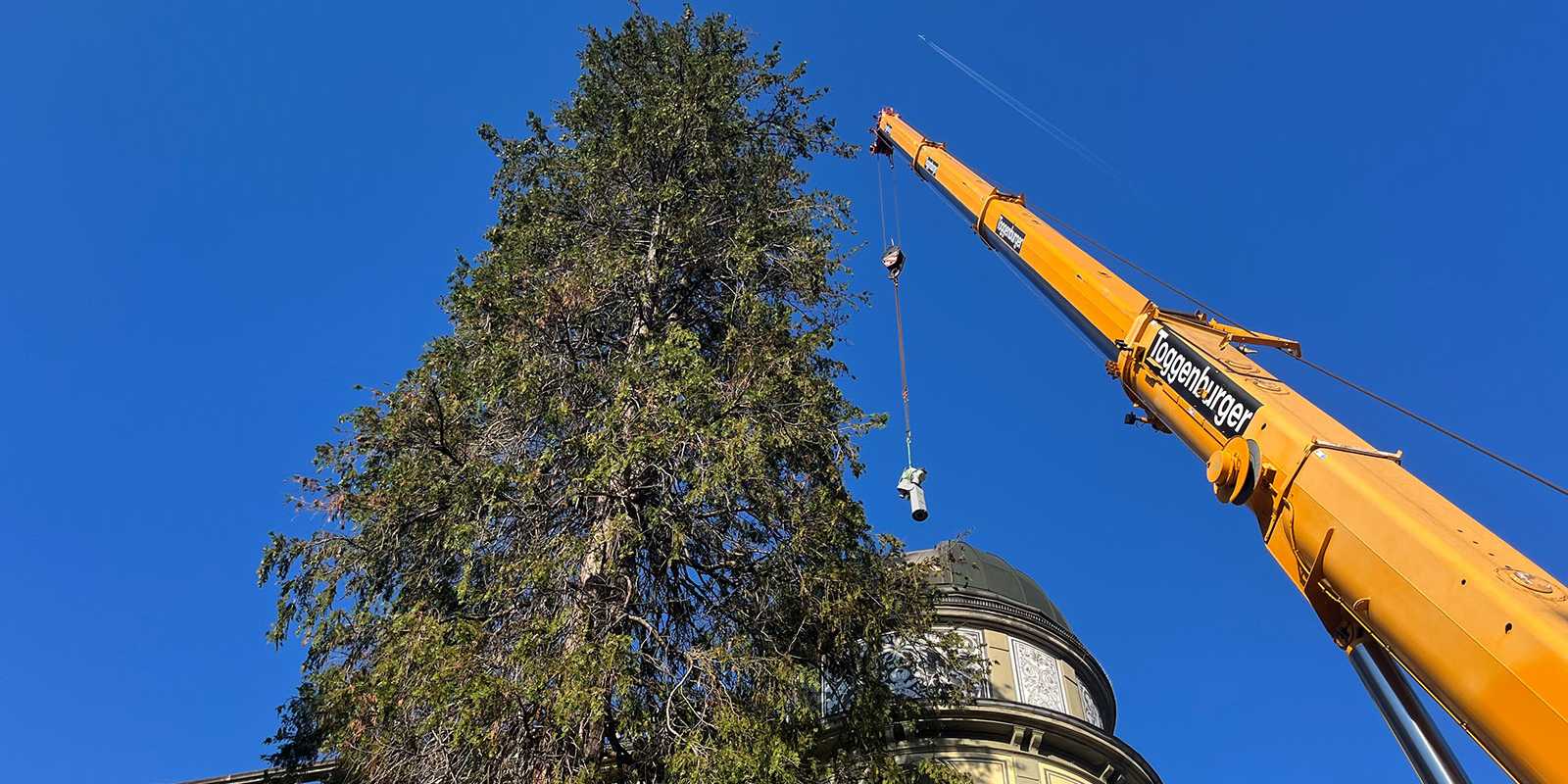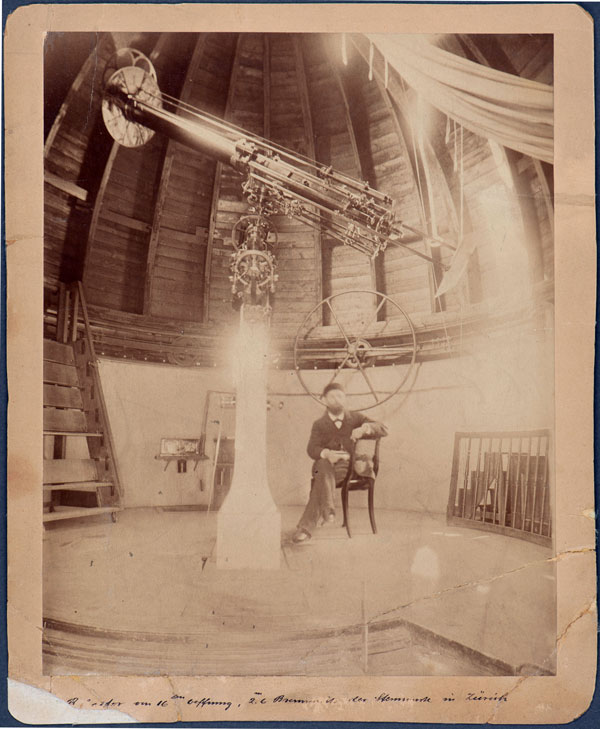This morning, part of the courtyard around the Semper Observatory was closed off and a crane was set up to lift a telescope out of the dome. In late August, the original telescope from the founding year 1864 will be reassembled inside the observatory.

The dome of the Semper Observatory, where the Collegium Helveticum is located today, still houses a telescope for observing the sky. This is a refracting telescope, also known simply as a refractor. In contrast to reflecting telescopes, refractors use lenses to achieve the magnification of the image. In recent years, however, the original refractor used by astronomers at the time the observatory was founded has no longer been located there.
It was initially transferred to Kern, one of the two companies that produced it, in 1982, after the observatory ceased its research activities at the observatory in 1980. In 1988 it was transferred into storage together with Kern’s historical instrument collection in the depot of the Stadtmuseum Aarau.
Original refracting telescope returns
As part of the Holdings of ETH Zurich Architectural Culture project run by the Real Estate Management department and the ETH Library, the original refractor will now be retrieved and restored to its original location in the observatory on 28 August 2023. One of the aims of the Holdings of ETH Zurich Architectural Culture project is to make these historical scientific instruments visible once again in their original locations at ETH.

Named after its manufacturers, the Kern-Merz refractor is now part of the ETH Library’s collection of scientific instruments and teaching aids. It also complements the permanent exhibition, which opened in 2022 and includes astronomical instruments from the Rudolf Wolf collection in the foyer of the observatory.
The original refractor was installed in 1864 by order of then-director of the Semper Observatory, external page Rudolf Wolf. Wolf was professor of astronomy at the Swiss Federal Polytechnic and the University of Zurich from 1855 to 1893 and used the refracting telescope for sunspot research. Amongst other things, he developed the Wolf number, an international standard for counting sunspots.
Crane lifts current refractor from the dome

The first step of the operation this morning saw the current refractor lifted out of the tower by crane and transported away from the observatory. Next Monday (28 August), the historic refractor will be delivered and lifted into the dome by crane and reassembled there.
On 22 and 28 August, the courtyard around the observatory will be closed while the crane is in place. This applies in particular to the rear entrance in the observatory courtyard (Spöndlistrasse passage) and the entrance to the exhibition room within the courtyard. Those affected have been notified directly.
Get to know the holdings of architectural culture, historical instruments and the Semper Observatory
- The Holdings of ETH Zurich Architectural Culture inventory documents furnishings, objects and components that are considered groundbreaking in terms of their construction period and production method: https://be-baukultur.ethz.ch/
- All records of sunspot activity of the Swiss Federal Observatory are in the ETH Zurich University Archives: https://library.ethz.ch/en/about-us/our-profile/projects/digitization-of-sunspot-drawings%20.html
- Permanent exhibition of astronomical instruments from the Rudolf Wolf collection is in the foyer of the observatory at the Collegium Helveticum. https://ethz.ch/en/campus/getting-to-know/learning-and-working/collections-and-archives/collection-of-scientific-instruments-and-teaching-aids.html
- An individual guided group tour of the Semper Observatory can also be booked through ETH Zurich Tours: https://ethz.ch/en/campus/getting-to-know/discover/tours/themed-tours.html
Always up to date
Would you like to always receive the most important internal information and news from ETH Zurich? Then subscribe to the "internal news" newsletter and visit Staffnet, the information portal for ETH employees.